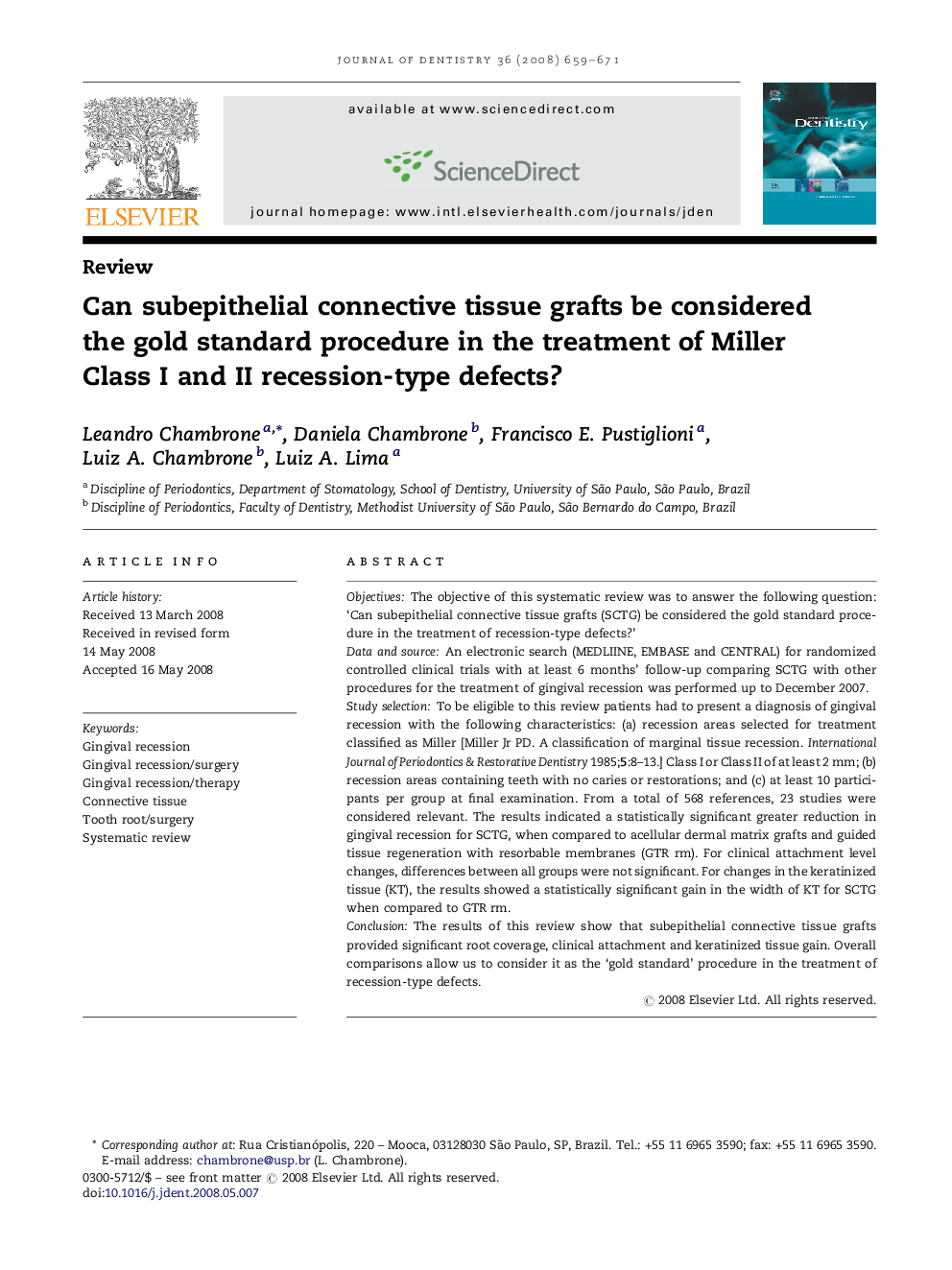| Article ID | Journal | Published Year | Pages | File Type |
|---|---|---|---|---|
| 3145477 | Journal of Dentistry | 2008 | 13 Pages |
ObjectivesThe objective of this systematic review was to answer the following question: ‘Can subepithelial connective tissue grafts (SCTG) be considered the gold standard procedure in the treatment of recession-type defects?’Data and sourceAn electronic search (MEDLIINE, EMBASE and CENTRAL) for randomized controlled clinical trials with at least 6 months’ follow-up comparing SCTG with other procedures for the treatment of gingival recession was performed up to December 2007.Study selectionTo be eligible to this review patients had to present a diagnosis of gingival recession with the following characteristics: (a) recession areas selected for treatment classified as Miller [Miller Jr PD. A classification of marginal tissue recession. International Journal of Periodontics & Restorative Dentistry 1985;5:8–13.] Class I or Class II of at least 2 mm; (b) recession areas containing teeth with no caries or restorations; and (c) at least 10 participants per group at final examination. From a total of 568 references, 23 studies were considered relevant. The results indicated a statistically significant greater reduction in gingival recession for SCTG, when compared to acellular dermal matrix grafts and guided tissue regeneration with resorbable membranes (GTR rm). For clinical attachment level changes, differences between all groups were not significant. For changes in the keratinized tissue (KT), the results showed a statistically significant gain in the width of KT for SCTG when compared to GTR rm.ConclusionThe results of this review show that subepithelial connective tissue grafts provided significant root coverage, clinical attachment and keratinized tissue gain. Overall comparisons allow us to consider it as the ‘gold standard’ procedure in the treatment of recession-type defects.
